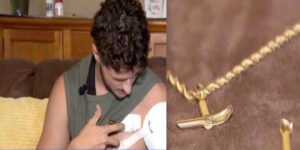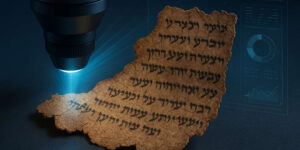In Search of the Biblical Emmaus
 We may never know with certainty which of the four sites associated with “Emmaus” is the true location. Which one is the actual location where Jesus appeared to His disciples following His resurrection?
We may never know with certainty which of the four sites associated with “Emmaus” is the true location. Which one is the actual location where Jesus appeared to His disciples following His resurrection?
The story in Luke 24 recounts how two of Jesus’ disciples met Him while traveling. They were heading west from Jerusalem, to Emmaus. They spoke with the “stranger” for a while and only later, when they ate together, was Jesus’ true identity revealed. Later, the two disciples headed back to Jerusalem.
The name Emmaus is a mispronunciation of the Hebrew word Hammat, meaning hot springs, so the site must be near a natural spring.
The distance is also crucial in identifying Emmaus. The disciples traveled in a single day from Jerusalem, to Emmaus, and back. Therefore, the biblical site of Emmaus needs to be within round-trip distance from Jerusalem.
The distance in the Gospels is measured as “three-score furlongs” (Luke 24: 13), which is most commonly translated as approximately 60 “stadia,” (an ancient Greek unit of length). However, there are discrepancies within the text; some translations state that the distance was 160 stadia. Depending on the translation, Emmaus can be anywhere from seven to 18 miles away.
Going on an “Emmaus” tour leads us to some fascinating sites for the Christian traveler.
We start with the most famous and most widely accepted of the four sites—Emmaus Nicopolis, or its Arab name, Imwas, located on the Jerusalem-Tel Aviv road. It was the earliest site to be identified with the biblical Emmaus – in the 4th century AD—and this early identification strengthens the argument that this is the true site.
Likewise, when Arabs settle in a village, they traditionally keep its original name, and the similarities between “Imwas” and “Emmaus” further bolster the claim. However, it is far from Jerusalem—a distance of 16 miles, making quite a tiring round trip journey for the disciples.
Emmaus is located in the famous Ayalon Valley, where the Israelite ruler Joshua commanded the sun and moon to stand still. Today, there is a monastery located at the site, in Latrun. Originally built as an inn for travelers on their way to Jerusalem, it is now inhabited by Trappist Monks, who sell the monastery’s famous wine and honey.
Visitors can also see a 12th century Crusader fortress. In nearby Park Canada—a nature lover’s dream—tourists can visit the ruins of the ancient city of Emmaus, including a Roman-Byzantine bathhouse and an amphitheater.
The next possible Emmaus is in Abu Ghosh, a Christian-Arab village located between Nicopolis and Jerusalem. This was one of the locations favored by the Crusaders as the resurrection site. Abu Ghosh is also identified as the ancient Kiryat Ye’arim, where the Ark of the Covenant rested for 20 years until King David brought it to Jerusalem.
Today, one of the best-preserved Crusader churches is in Abu Ghosh. Called the Church of the Resurrection, it was built atop Roman ruins and is now a Benedictine Monastery, which can be visited. The Church of Notre Dame de L’Arche de L’Alliance (Our Lady of the Ark of the Covenant) was built in the 1920s on the site of an ancient Byzantine church. A statue on the roof depicts the Virgin Mary carrying baby Jesus. On the Jewish holidays of Shavuot and Sukkoth, both churches hold spectacular music festivals. Abu Ghosh is also famous for its Middle Eastern cuisine, specifically hummus, and restaurants abound specializing in authentic regional delicacies.
We move on to Moza, likely the “Motza” mentioned in the time of Joshua and again in the Jerusalem Talmud. This is the closest of the four sites to Jerusalem, and there are Roman ruins visible. However, Moza’s relationship to the resurrection is ambiguous; many conjecture that it was chosen as a possibility merely due to its close proximity to Jerusalem.
The final “Emmaus” is in El-Kubeibeh, an Arab village, located west of Nebi Samwil. The Crusaders were the first to identify this as the Biblical site, after finding a nearby fort named Castellum Emmaus.They reasoned the name could mean only one thing—this was the site of the biblical Emmaus.
In addition, the village lies approximately eight miles from Jerusalem – perfect day-trip distance. The Crusaders declared it “Emmaus” and built a church on top of the site; later, the Franciscan order, at the beginning of the 20th century, built a church atop those remains. The Franciscan church is still standing and can be visited today.
Archaeologists unearthed further remains dating from the Hellenistic, Roman, and Byzantine eras. Some scholars, possibly from Byzantine or Roman time, identify one of those remains, as the house of Cleopas, one of the two disciples. However, although the distance and archaeological remains seem to verify El-Kubeibeh as the correct site, the lateness of the identification (12th century AD) casts aspersions on its veracity; many conjecture that the Crusaders identified this as “Emmaus” in order to have a convenient stopping point for pilgrims to the Holy Land.
So which one of these is it?
We don’t know for certain. But as so often happens, while the results of the journey may be inconclusive, hopefully the journey itself brings meaning and fulfillment.
Travelujah.com is
the only Christian social network focused on travel to the Holy Land.
It is a vibrant online community offering high quality Christian
content, user and expert blogs, travel tours and planning services for
people interested in connecting to the land.




























































